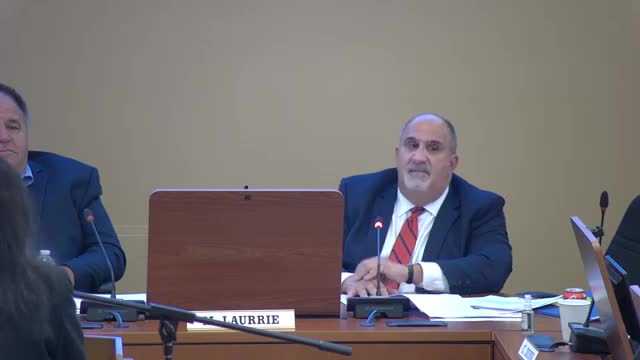Dyslexia Awareness Month Highlights Urgent Need for Education Reform
October 18, 2024 | NIAGARA FALLS CITY SCHOOL DISTRICT, School Districts, New York
This article was created by AI summarizing key points discussed. AI makes mistakes, so for full details and context, please refer to the video of the full meeting. Please report any errors so we can fix them. Report an error »

In a recent government meeting, discussions centered around the challenges and awareness of dyslexia, coinciding with Dyslexia Awareness Month. A passionate speaker shared personal experiences regarding her daughter Gabriela's struggles with reading, highlighting the importance of understanding dyslexia as a specific learning disability that affects approximately 20% of children.
The speaker emphasized that dyslexia is not merely a reading issue but a broader language impairment, rooted in difficulties with word recognition, spelling, and phonological processing. Drawing from historical insights, she referenced Dr. Samuel Orton, who pioneered multisensory approaches to reading instruction, which remain influential in educational curriculums today.
The meeting also addressed the neurological aspects of dyslexia, explaining how brain imaging studies reveal that individuals with dyslexia utilize different brain regions when attempting to read compared to typical readers. This neurobiological difference underscores the need for targeted interventions that can help rewire the brain to improve reading skills.
Furthermore, the speaker pointed out the connection between dyslexia and auditory processing disorders, which can complicate reading difficulties. She advocated for early identification and intervention strategies, including intensive, multisensory reading programs, to support children with dyslexia in overcoming their challenges.
The discussions highlighted the critical need for increased awareness and resources for dyslexia, particularly as New York State opens a public forum for comments on educational strategies related to this learning disability. The meeting concluded with a call to action for educators and policymakers to prioritize dyslexia awareness and support systems in schools.
The speaker emphasized that dyslexia is not merely a reading issue but a broader language impairment, rooted in difficulties with word recognition, spelling, and phonological processing. Drawing from historical insights, she referenced Dr. Samuel Orton, who pioneered multisensory approaches to reading instruction, which remain influential in educational curriculums today.
The meeting also addressed the neurological aspects of dyslexia, explaining how brain imaging studies reveal that individuals with dyslexia utilize different brain regions when attempting to read compared to typical readers. This neurobiological difference underscores the need for targeted interventions that can help rewire the brain to improve reading skills.
Furthermore, the speaker pointed out the connection between dyslexia and auditory processing disorders, which can complicate reading difficulties. She advocated for early identification and intervention strategies, including intensive, multisensory reading programs, to support children with dyslexia in overcoming their challenges.
The discussions highlighted the critical need for increased awareness and resources for dyslexia, particularly as New York State opens a public forum for comments on educational strategies related to this learning disability. The meeting concluded with a call to action for educators and policymakers to prioritize dyslexia awareness and support systems in schools.
View full meeting
This article is based on a recent meeting—watch the full video and explore the complete transcript for deeper insights into the discussion.
View full meeting
